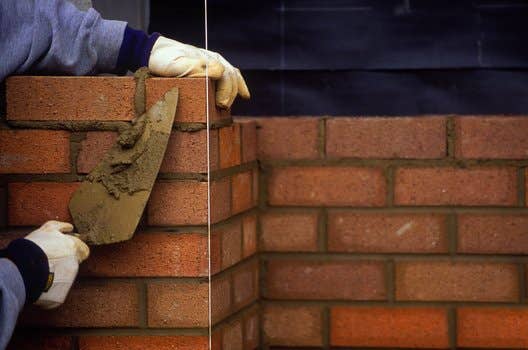The smart Trick of Bricklayer Auckland That Nobody is Discussing
Wiki Article
Getting The Bricklayer Auckland To Work
Table of ContentsHow Bricklayer Auckland can Save You Time, Stress, and Money.The Definitive Guide for Bricklayer AucklandWhat Does Bricklayer Auckland Do?Examine This Report about Bricklayer Auckland
The difference between No and traditional stonework is in the laying of the brick. The brick is no much longer pushed up and down, yet tilted.Furthermore, we additionally took note of a good percentage in between the size as well as width of the block so that it is perfect for functioning with a cot bond. In this manner the job continues swiftly. Advantage, For a professional by doing this of functioning is barely a challenge. He can collaborate with the material/equipment that recognizes to him.
Bricklayers are a vital profession in the building sector, in charge of laying blocks, pre-cut stone as well as concrete blocks in mortar. Bricklayers construct, prolong as well as fix residential and also commercial buildings, as well as various other frameworks such as foundations, walls, chimneys or attractive masonry. Obtaining to completion of a project as well as having the ability to say 'I developed that' offers a genuine feeling of success for brickies.
Your time as a bricklaying pupil will commonly be split between your employer and training provider (such as an university), with a minimum of 20% of your normal functioning hours invested in training. Your training could take place weekly, on a monthly basis or in a separate block of time, and it can happen at your workplace, at your training service provider or online.
The smart Trick of Bricklayer Auckland That Nobody is Discussing
When looking into building, you invariably uncover that any brand-new or ingenious idea has in fact been tried over and also over once again, usually extending back decades. Among these new-but-actually-old ideas is the idea of a mechanical bricklayer, a machine to automate the construction of stonework wall surfaces. It's simple to see the appeal of this suggestion - masonry building and construction seems practically flawlessly matched for mechanization.It does not feel like it would call for physically intricate movements - each block obtains a layer of mortar applied, as well as is merely stocked place following to the previous one. And because each traditional joint coincides dimension, positioning is almost deterministic - each brick coincides fixed distance from the previous one.
These devices couldn't sense anything about their environment, or measure where a brick required to go - they just extruded a layer of mortar as well as mechanically placed a brick at regular intervals Learn More Here (Bricklayer Auckland). It's unclear exactly how many of these machines ever before made it past the drawing board, but at least one of these (John Knight's) was made use of to construct a block wall surface that purportedly still stands today.
For many years, stonework has actually decreased in significance as a building technology in the developed globe, and also with it the passion in automating it. Unlike with concrete 3D printing, where there are loads of attempts to create the technology, I can just discover a handful of current efforts to automate stonework. Bricklayer Auckland.
The smart Trick of Bricklayer Auckland That Nobody is Talking About
It can placing blocks in limited corridors or intricate corners, and Hadrian can build all the walls of a small building with simply a couple of relocations of the car. Hadrian can currently establish around 200 blocks a hr, however they're aiming to be able to do 1000 obstructs a hr or even more (the blocks it establishes are different from the block masonry utilized in the US, but in US masons can set somewhere in the neighborhood of 400 obstructs a day).
SAM has a series of sensing units to compensate for the motion of the system as well as guarantee it's positioning bricks level, as well as can function with bricks of all different dimensions (though it won't build CMU obstruct wall surfaces). It gets mounted to a movable scaffolding that's raised slowly as the wall surface is finished.
The promotional see this page material on Building and construction Robotics' site suggests that it's no much longer their major emphasis - even more emphasis is provided to their other item, MULE.Other than SAM and Hadrian, there are a couple of other mechanical bricklayers in numerous phases of growth. You also see the periodic scholastic initiative. One location where we do see some commercial success with mechanical bricklaying is with brick roadways - a selection check it out of firms use makers that can "publish" an area of road made of blocks.
The 30-Second Trick For Bricklayer Auckland
A a little different group of makers targeted at boosting masonry efficiency is what I'll call "stonework assistants". These are equipments created to assist with literally raising the block (they seem to be much more typical with block than block) and taking the pressure off the mason, while still allowing the mason to adjust it right into setting, Masonry aides day from a minimum of 1994, when the army tried out with MAMA, the Mechatronically Assisted Mason's Help.
Report this wiki page